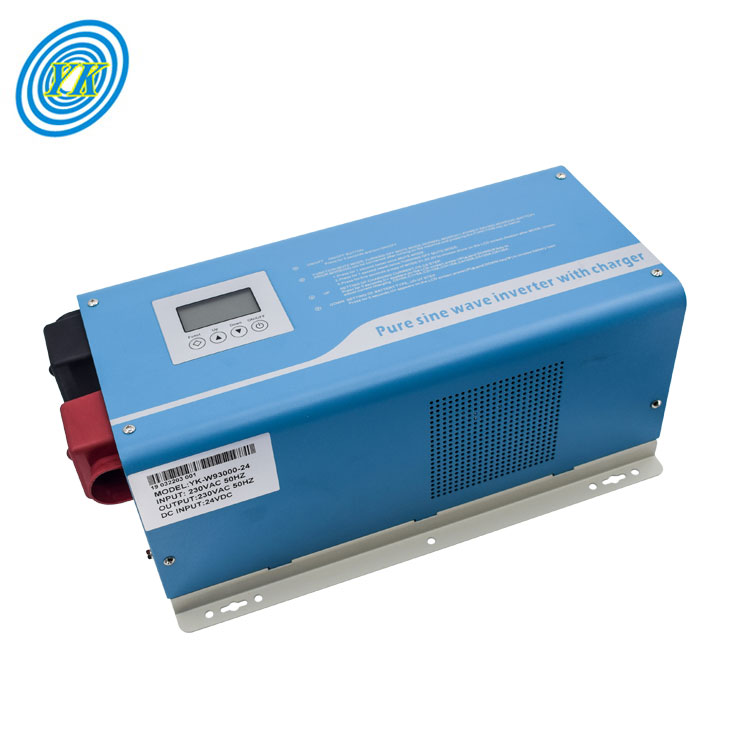News
Advancing Power Solutions: The Comprehensive Guide to Low-Frequency Inverters with Chargers
Click: 806 Date: 01/18/2024 2::38::51 PM
Advancing Power Solutions: The Comprehensive Guide to Low-Frequency Inverters with Chargers
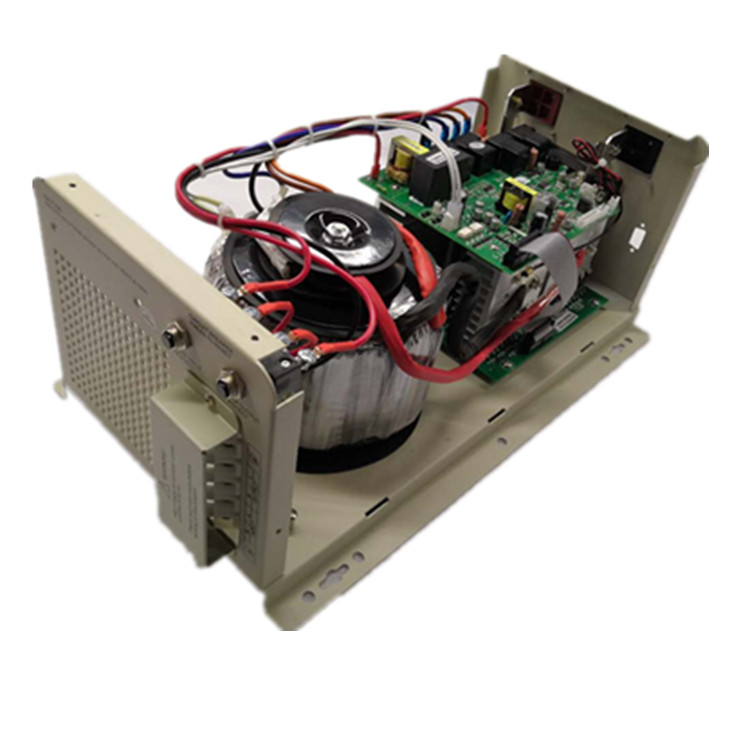
The advancement of low-frequency inverters paired with chargers has led to a pivotal enhancement in energy storage systems, particularly within the realm of renewable energy sources like solar power. These systems, which convert direct current (DC) from solar panels or batteries into alternating current (AC) for use in homes and businesses, have become integral in the quest for sustainable and efficient energy utilization.
The significance of battery efficiency in such inverters cannot be understated. Low-frequency inverters are advantageous due to their extended power cycles, which facilitate improved power management and utilization. By operating at lower frequencies, these inverters can generate AC power with minimal electrical noise and harmonics, thereby offering a more stable and cleaner power output suitable for sensitive electronic devices. This characteristic not only protects the devices but also ensures their efficient operation.
Rack-mounted designs of solar hybrid inverters exemplify space optimization within energy storage systems. These inverters can be seamlessly integrated with existing solar power setups, promoting a more compact and maintainable energy solution. This integration is particularly beneficial as it can lead to reduced installation costs and simplified maintenance procedures.
Furthermore, employing low-frequency inverters with chargers in solar energy systems can lead to significant cost savings. By optimizing the conversion efficiency from DC to AC, these systems reduce energy wastage, which in turn lowers electricity bills and accelerates the return on investment for solar power system owners. The clean energy produced by these systems also contributes to environmental sustainability by minimizing the carbon footprint associated with traditional electricity generation.
The intersection of low-frequency inverter technology and energy storage marks a transformative period in renewable energy management. It underscores the importance of efficient energy conversion and storage, promoting energy independence and environmental stewardship. As the global community continues to embrace solar power, the role of such inverters in maximizing solar energy efficiency becomes increasingly vital, promising a greener and more sustainable future.
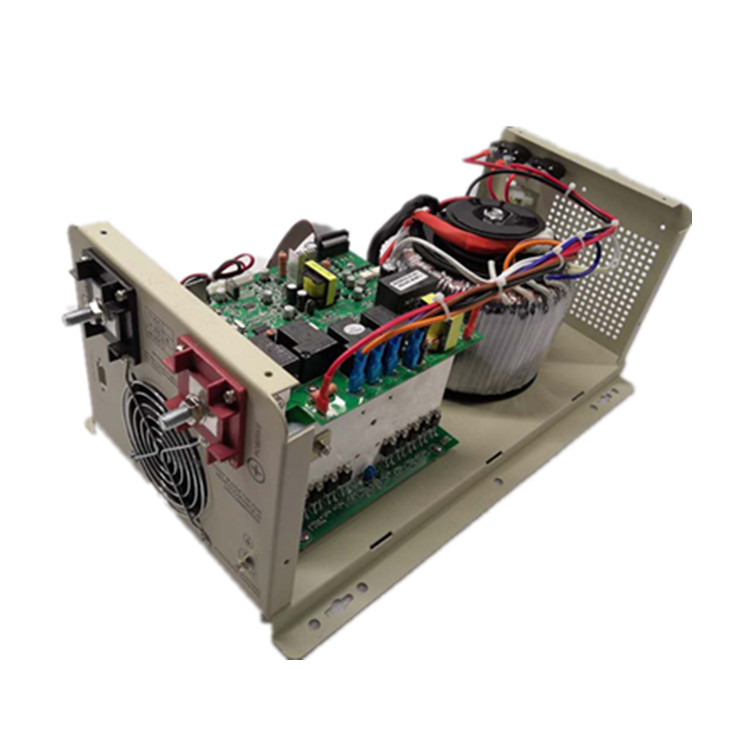
Low-frequency inverters with chargers are crucial components in various power systems, providing reliable AC power from DC sources. Their construction is designed to handle significant power loads and surges, making them indispensable in many applications. In an article titled "Designing for Durability: The Construction of Low-Frequency Inverters with Chargers," we would explore the following facets:
The Robustness of Low-Frequency Inverters: The hallmark of low-frequency inverters is their robust construction, which often includes heavy-duty transformers with a large iron core. These transformers are capable of withstanding high surge loads, making them suitable for applications involving motors, pumps, and tools that require a substantial initial power surge
Transformer-Based vs. Electronic Switching: Unlike their high-frequency counterparts that rely on electronic switching, low-frequency inverters use powerful transformers. This difference in design translates to a more reliable and sturdy performance, especially under high power levels. This is because transformers are generally less prone to damage than MOSFETs (Metal Oxide Semiconductor Field-Effect Transistors) used in high-frequency inverters
Cooler Operations and Efficiency Concerns: The transistors in low-frequency inverters, typically Field Effect Transistors (FETs), operate at a slower switching frequency, which allows them to run cooler. However, this design also results in a heavier weight and lower efficiency when compared to high-frequency inverters, with low-frequency models generally converting power at an efficiency between 60%-70%
Customization and Feature Integration: Low-frequency inverters are often designed to be feature-rich, allowing for the integration of additional external GFCI outlets, multiple DC voltage inputs, regulated dual output voltages, and chemistry-appropriate battery chargers. They also often include transfer relays for seamless transition between shore power and inverter power
Considerations for Specific Applications: While low-frequency inverters excel in handling heavy loads and providing durability, they may not be ideal for all scenarios due to their larger size and weight. They are best suited for systems where size and weight are not major constraints and where the ability to handle significant power fluctuations is necessary
By examining these aspects, the article would provide a comprehensive understanding of the design and construction principles that underpin the durability of low-frequency inverters with chargers, as well as their suitability for various applications.
Harnessing Renewable Sources: Integrating Solar Panels with Low-Frequency Inverter Systems
The integration of solar panels with low-frequency inverter systems is a critical component in the advancement of sustainable energy solutions. Low-frequency inverters play a pivotal role in converting the variable direct current (DC) output of solar panels into a consistent alternating current (AC) that can be utilized by electrical grids or for off-grid applications. This conversion is essential because the AC electricity is what our modern infrastructure and appliances are designed to use.
The Role of Low-Frequency Inverters in Solar Energy Conversion
Inverters are the heart of solar energy systems, tasked with the crucial role of transforming the DC power produced by solar panels into AC power compatible with the electrical grid. This process involves rapidly alternating the direction of the DC input to create an AC output. The resulting AC power must have a clean sine wave form to match the grid's power and avoid damaging electrical equipment.
Grid Services Provided by Solar Inverters
Modern inverters extend beyond mere conversion; they are equipped to provide various grid services. For instance, they can supply reactive power to help maintain voltage levels and keep the current and voltage in phase, which is essential for the efficient operation of the grid. Additionally, inverters can help stabilize the grid by responding to deviations in voltage or frequency, ensuring a balance in the power system's supply and demand.
Grid-Forming Capabilities of Advanced Inverters
Advanced inverters, known as grid-forming inverters, take on additional responsibilities, such as initiating a black start to reboot the grid after a complete shutdown. Unlike conventional grid-following inverters that depend on the grid's signal, grid-forming inverters can autonomously generate the necessary signal to produce a sine wave, allowing for a stable grid in the absence of traditional turbine-based generation.
Integration with Battery Storage
The combination of solar panels and battery storage systems requires sophisticated inverters capable of managing power flows effectively. These systems can operate independently from the grid, providing resilience during outages. Advanced inverters are essential for these hybrid systems, managing the direct charging of batteries and ensuring the seamless transition between solar generation and battery supply.
Future of Inverter-Based Grids
As the grid evolves to include more renewable energy sources, the role of inverters becomes increasingly significant. Traditional power generation, characterized by the inertia of massive turbines, is gradually giving way to inverter-based generation, which lacks physical inertia but offers the flexibility to produce energy at any frequency. The transition to an inverter-based grid necessitates the development of smarter inverters that can adapt to and mitigate disruptions, contributing to a stable and reliable power supply.
The integration of solar panels with low-frequency inverter systems is not only a technological advancement but also a step towards a cleaner, more sustainable future. By harnessing renewable sources and refining the capabilities of inverters, we can ensure a resilient and efficient energy grid for generations to come.
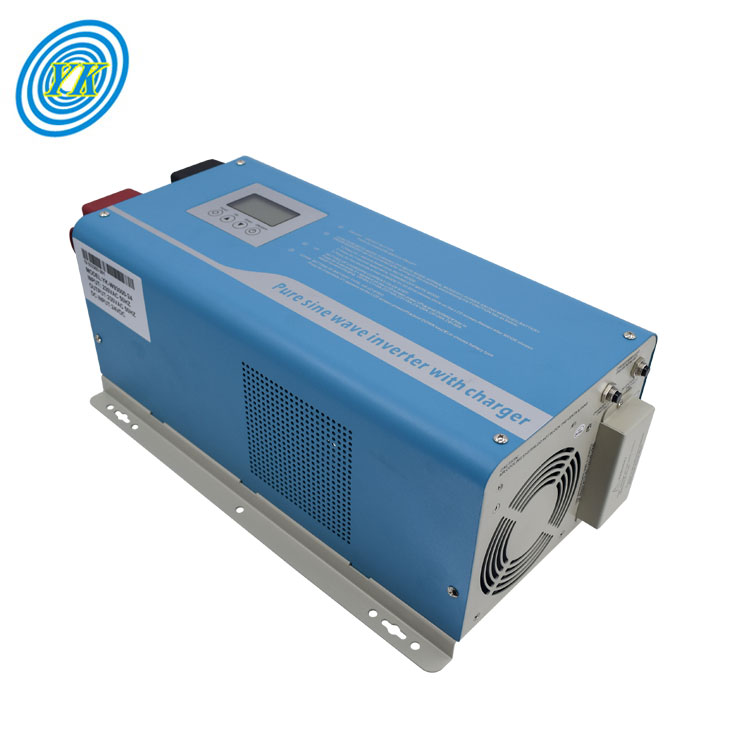
When it comes to low-frequency inverters, one of the critical factors is their ability to handle surge capacities. These devices are designed to convert DC power from batteries or other sources into AC power, which can be used to run various electrical devices. Surge capacity is particularly important for starting inductive loads, such as motors found in refrigerators, pumps, and air conditioning units, which require a higher initial power burst when starting up.
Low-frequency inverters are often preferred for heavy-duty applications because they are typically designed with robust transformers capable of handling high inrush currents associated with starting inductive loads. This contrasts with high-frequency inverters, which may struggle with these surge demands due to their reliance on electronic circuitry rather than heavy-duty transformers.
A surge capacity challenge article could delve into the specifics of how low-frequency inverters manage these power demands. It could explain the role of transformers in these inverters and how they contribute to the inverter's ability to sustain surges. Moreover, the article could discuss the design considerations that go into making low-frequency inverters capable of handling high power levels, such as the choice of materials, transformer design, and the implementation of protective features to prevent damage during power surges.
The article could also compare the performance of low-frequency inverters with their high-frequency counterparts, highlighting scenarios where one might be preferred over the other. For instance, while low-frequency inverters are excellent for surge capacity and reliability, they are also typically heavier and more expensive, which might not be ideal for all applications.
Additionally, the article could provide insights into how users can optimize their systems for surge capacity by selecting the right size and type of inverter, considering the total power requirements, and understanding the startup characteristics of their appliances. It could also touch on the importance of a proper installation and maintenance routine to ensure the longevity and performance of the inverter.
Lastly, the article could explore the future of low-frequency inverter technology, discussing potential improvements in materials and design that could enhance surge capacity while reducing size, weight, and cost. This could include advancements in semiconductor technology, transformer design, and energy storage solutions that complement the inverter's capabilities.
In summary, an article titled "The Surge Capacity Challenge: Ensuring Peak Power in Low-Frequency Inverters" would provide a comprehensive overview of how low-frequency inverters handle surge capacity, the design principles behind these robust systems, practical advice for users, and a look into the future of inverter technology.
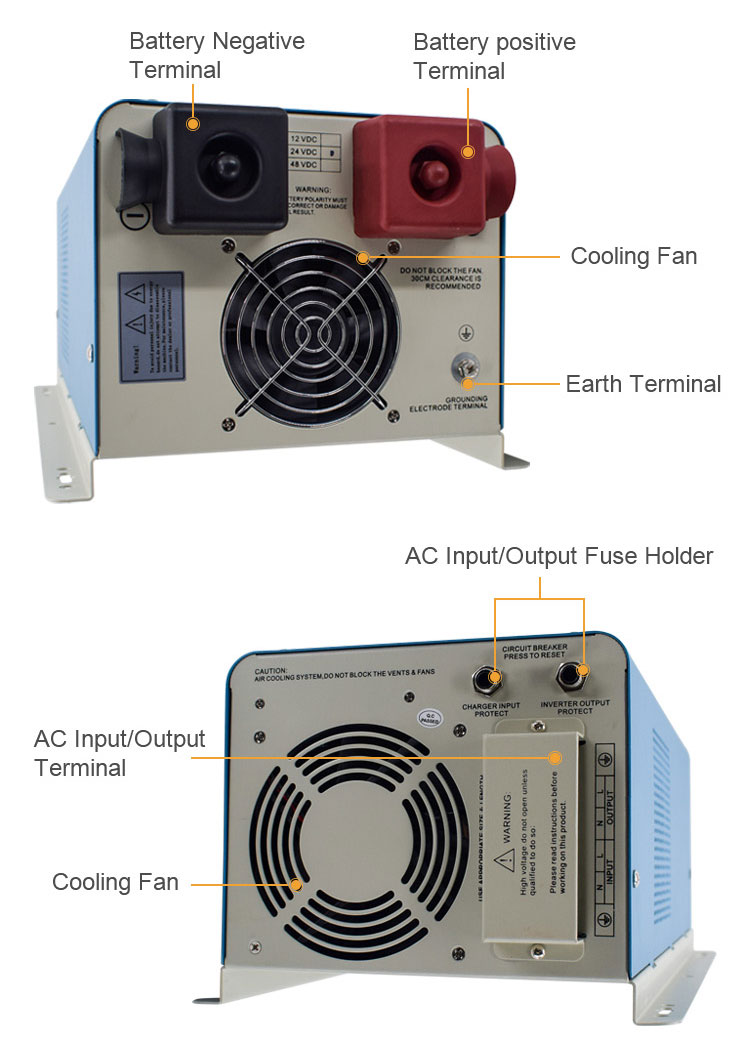
Low-frequency inverters with chargers are a crucial component in the realm of power conversion and energy systems, catering to both residential and industrial applications. These inverters not only convert direct current (DC) from batteries or renewable sources into alternating current (AC) for use in electrical appliances, but they also feature built-in chargers to replenish battery power. This article explores the versatile applications of low-frequency inverters with chargers, highlighting their significance across various sectors.
Residential Energy Independence
In residential settings, low-frequency inverters with chargers provide homeowners with a reliable source of power, especially in areas with unstable grid electricity. These inverters can draw energy from solar panels or wind turbines, store it in batteries, and then supply the household with AC power. The built-in charger ensures that batteries are recharged during low energy consumption periods, guaranteeing an uninterrupted power supply.
Industrial Process Optimization
Industries benefit from the precision and control offered by low-frequency inverters with chargers. They regulate the operation of heavy machinery, ensuring optimal performance and energy savings. For example, in manufacturing plants, these inverters adjust the speed and torque of motors to match production needs, reducing wear and tear on equipment and lowering energy costs.
Emergency Backup Power Systems
Critical facilities such as hospitals and data centers rely on uninterrupted power to maintain operations. Low-frequency inverters with chargers form the backbone of emergency backup power systems, instantly providing power in case of a grid failure. The charger keeps the batteries ready to deliver power when needed, ensuring vital services remain operational.
Renewable Energy Integration
As the world shifts towards sustainable energy solutions, low-frequency inverters with chargers play a pivotal role in integrating renewable energy sources into existing power systems. They handle the variable output from solar and wind installations, provide power conditioning, and enable energy storage for later use.
Off-Grid Living and Remote Applications
For remote locations where grid power is unavailable or unreliable, low-frequency inverters with chargers are essential. They empower off-grid living by providing AC power from renewable sources or generators. The charger component maintains battery health, ensuring a consistent power supply for homes, research stations, or remote telecommunication sites.
In conclusion, low-frequency inverters with chargers are versatile and critical components that cater to a wide range of applications from residential to industrial use. They ensure energy efficiency, operational reliability, and the seamless integration of renewable energy sources, highlighting their importance in modern electrical infrastructure.
